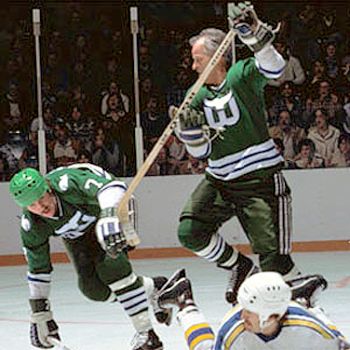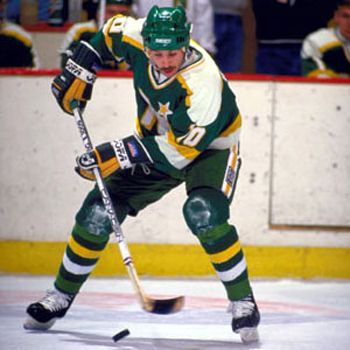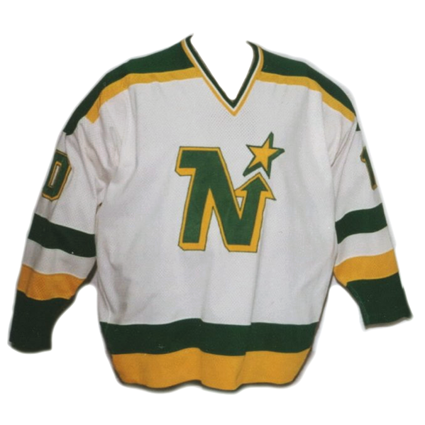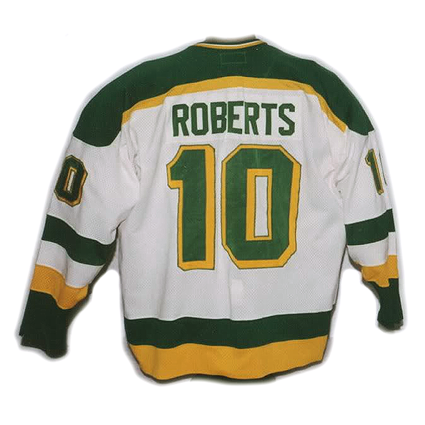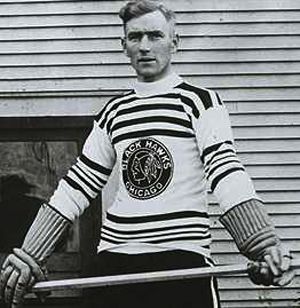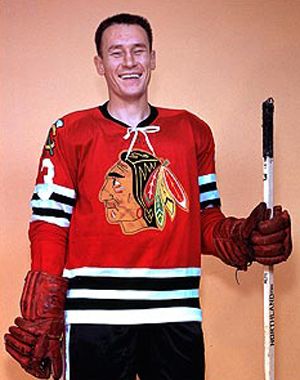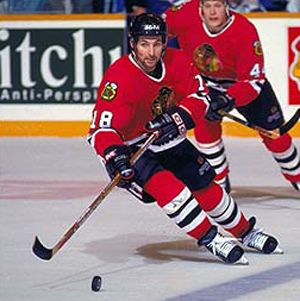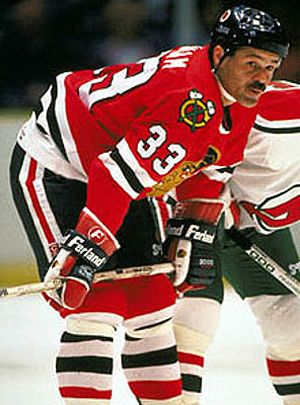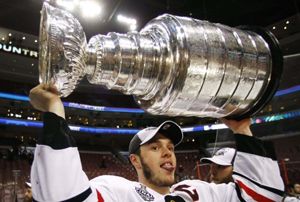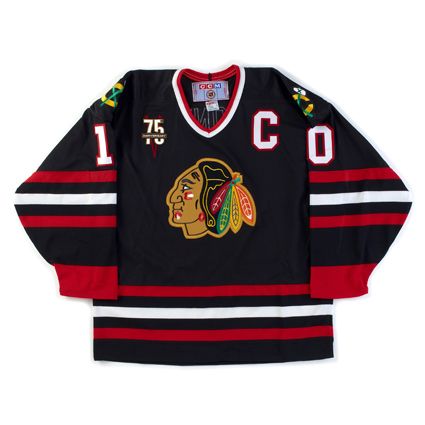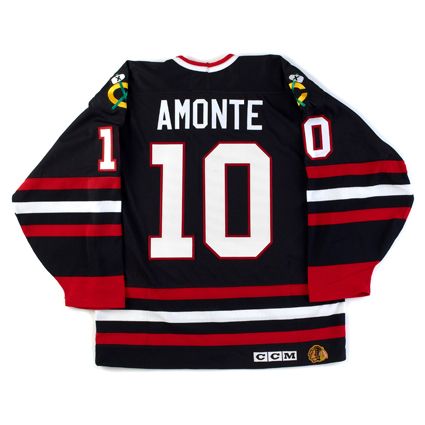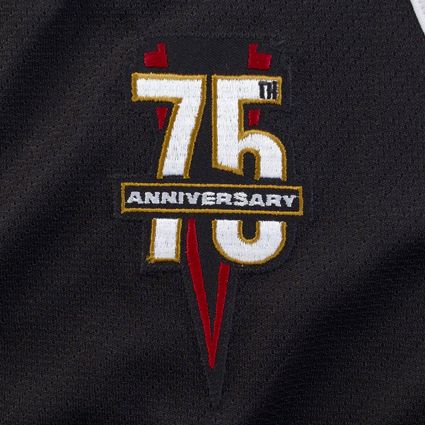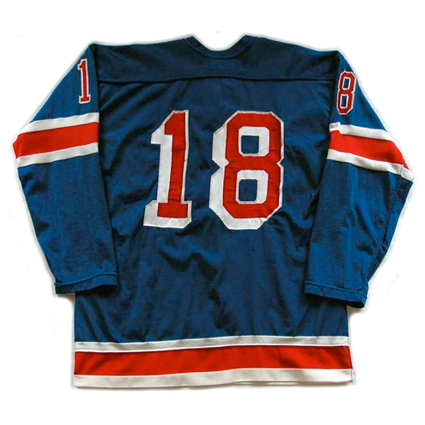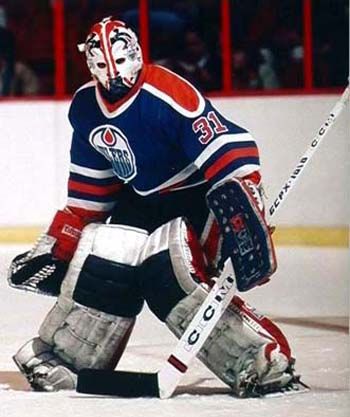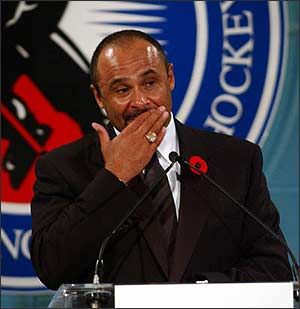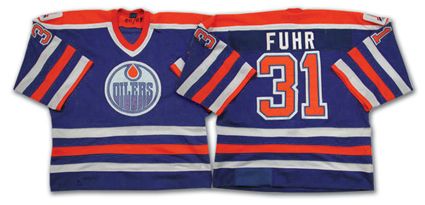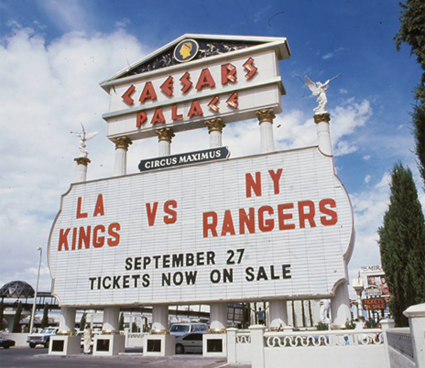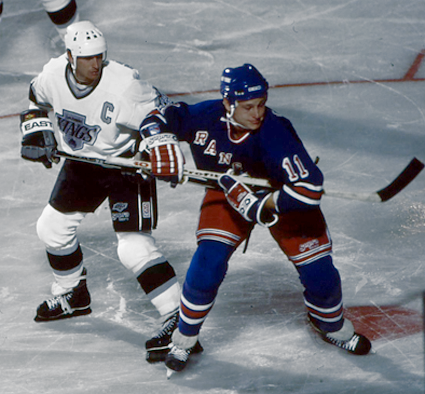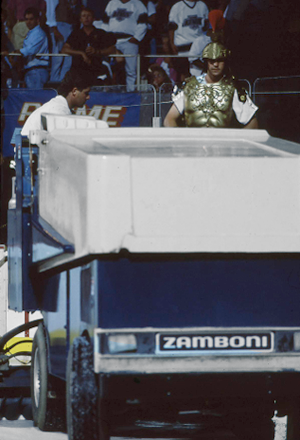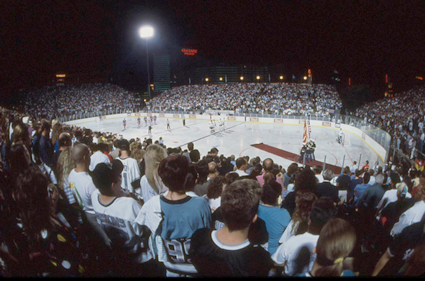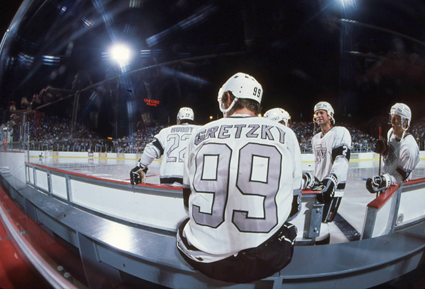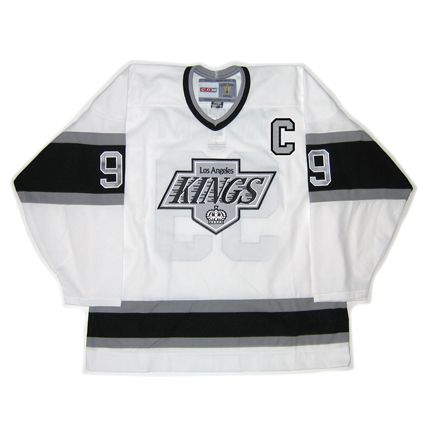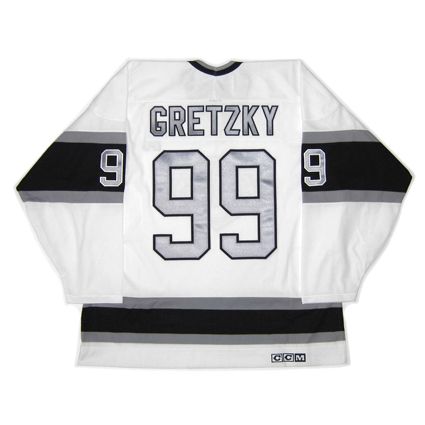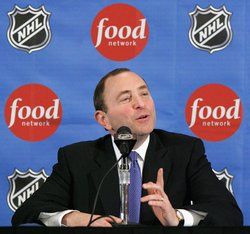Saturday, October 2, 2010
1980-81 Minnesota North Stars Gordie Roberts Jersey
Friday, October 1, 2010
1995-96 Colorado Avalanche Joe Sakic Jersey
Thursday, September 30, 2010
2000-01 Chicago Blackhawks Tony Amonte Jersey
Wednesday, September 29, 2010
1969-70 New York Rangers Walt Tkaczuk Jersey
Tuesday, September 28, 2010
1988-89 Edmonton Oilers Grant Fuhr Jersey
Monday, September 27, 2010
1991-92 Los Angeles Kings Wayne Gretzky Jersey
Sunday, September 26, 2010
Weekend Update
"In all my years as commissioner, I have learned that our diverse group of fans and players all enjoy food of some sort. Italian, French, barbecue, quick-and-easy 30-minute meals—you name it, one or more of them eat it," said Bettman, adding that Iron Chef Frenchhost Hiroyuki Sakai will join play-by-play announcer Mike "Doc" Emrick and analyst Brian Engblom to form a new lead announcing team for all Food Network games. "This partnership has been a long time coming. If the Food Network would have been around in 1991, we would have left ESPN in a heartbeat."
“It’s great to know we will be on television next year,” Bettman added, smiling as the NHL’s new studio team, consisting of Rachael Ray as head hockey anchor and Bill Clement as game analyst, collaborated in an attempt to equate the offsides penalty to “zesting up” a pan-seared T-bone steak. “Thanks, Food Network.”
Though Bettman maintained that the Food Network was always the league's first choice, sources close to the commissioner confirmed that the NHL also considered broadcasting games on E!, the Golf Channel, and Cartoon Network before eventually deciding to go with the network offering the best combination of financial incentives and airtime.
"We also thought the lead-in programs on Versus, especially those that focused on bull-riding, bass fishing, and violent contact sports, were not entirely compatible with the image of the league," Bettman said. "Now, hockey games will follow Emeril Live, Feasting On Asphalt, and The Hungry Detective, which, as you can plainly see, are a better fit. Also, we are paying the Food Network much less money to broadcast our games."
According to terms of the deal, the Food Network will schedule broadcasts of over 50 full-length hockey games and will carry both the Eastern and Western Conference Semi-Finals, as well as Games 4 through 7 of the Stanley Cup Finals. The only exception, Bettman said, would be made for Rachael Ray, who appears on television roughly three times more than the NHL. In the case of Ray experiencing a scheduling conflict, hockey games will be postponed and rescheduled at Ray's convenience.
"We liked the idea of having hockey because it has two halftimes," said Food Network president Johnson, adding that the first game on the channel will feature the ceremonial dropping of an inaugural homemade Italian meatball at center ice by honorary referee Mario Batali. "Our debut coverage will include a halftime show hosted by Giada De Laurentiis, who will recap the game's events while guiding you through the preparation of Sicilian penne with swordfish and eggplant. Or, if you are in the mood for something more immediate, on-ice reporter Paula Deen will spend timeouts showing you certain tactics to enhance the flavor of your traditional southwestern dip."
Though she stated that she didn't want to give anything away, Johnson said that the network's first hockey-related profile will focus on Sidney Crosby eating veal and creamed spinach prepared by Roker On The Road host Al Roker. Other hockey players now contractually obligated to make appearances on shows include Chris Drury onFood 911, Martin Brodeur on Calorie Commando, and Alexander Ovechkin on Dinner: Impossible.
The new broadcasting deal has some sportswriters saying the move will make hockey even more irrelevant, while others believe this is a clear step up for the league.
"I watch the Food Network far more than I watch hockey, and I think most sports fans feel the same way," saidBoston Globe sports columnist Bob Ryan. "My favorite program is Food Nation With Bobby Flay. So I'll definitely watch that, and then maybe stick around to watch part of a period if the Bruins are playing. Everybody wins here."

